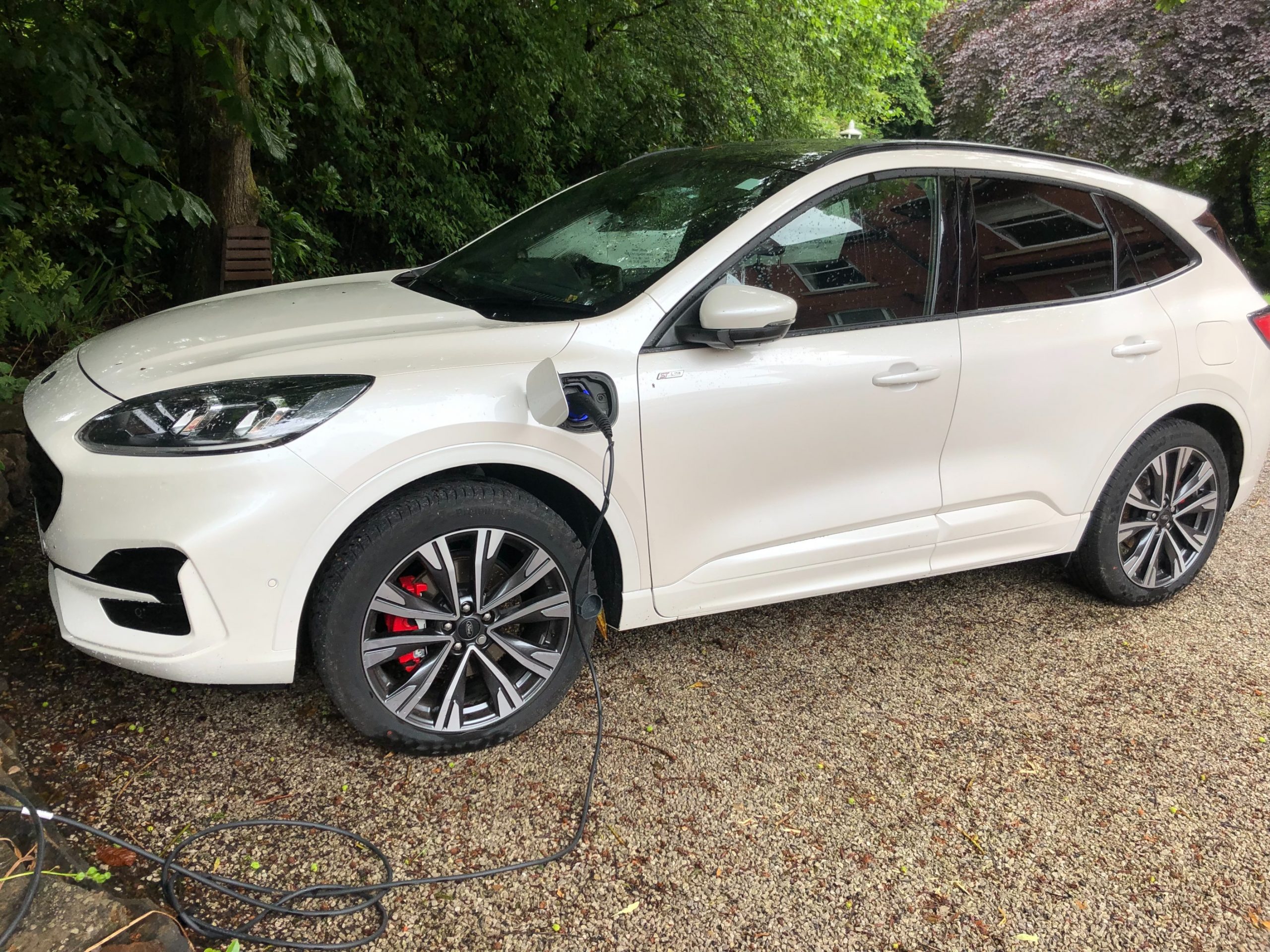

THERE is no doubt motoring is changing and changing fast these days… leaving some a little confused by all the electric and hybrid options on offer.
But if you want to dip your toe into this electronic new car world then I suggest the latest offering from automotive giant Ford is well worth a closer look.
For 2021 they have launches a new range of Kugas with a big choice of powertrains from conventional models with just petrol or diesel through mild-hybrid petrol assisted cars (MHEV) via a 48V electric system and full plug-in hybrids (PHEV) – which was our test car.
Ford expects around a third of buyers will opt for the PHEV with petrol and diesel sales taking most of the rest.
The Kuga’s new grille and more curvaceous exterior design is, say Ford, in response to customer feedback and there is no doubt it is a good looking motor with lots of on road presence. Underneath is the same rigid platform used by the Focus but the latest Kuga has grown a little in length and width to improve interior space yet rides a little closer to the ground.
The previous generation was limited to traditional petrol and diesel engines but new are a 148bhp mild-hybrid diesel and a range-topping 222bhp plug-in hybrid petrol. Diesel models are available with an eight-speed automatic transmission while petrol versions have a six-speed manual – except the plug-in hybrid which is also an auto.
The plug-in hybrid we tested has a 133bhp, 2.5-litre petrol engine and a CVT automatic plus a 109bhp electric motor which gives an electric driving range of 35 miles, 0 to 60 time of 9.2 seconds and a top speed of 125mph..
Inside the cabin is well made and well-appointed in our near top of the line ST-Line X Edition and the supportive heated sports seats make you feel connected to the car despite a high driving position.
The cabin is airy with plenty of leg and head room for all but boot space is reduced in our plug-in hybrid from 645 litres to 581 litres to accommodate that electric drivetrain.
The Kuga uses Ford’s latest Sync 3 infotainment software and on our ST Line version that operates via a 12.3in digital instrument display and 8in central touchscreen with key switchgear just below.

Standard kit on this £37,665 model includes sporty suspension, a panorama glass roof, heated windscreen, parking sensors all round, hands-free power tailgate, heated steering wheel, sat-nav, wireless phone charging, cruise control, electronic handbrake and a raft of the latest safety systems.
On the outside you get 19” machined alloy wheels, sporty ST Line red brake calipers and body kit, a bigger rear spoiler and LED lights.
But it is that smooth hybrid powertrain that is this car’s USP and it can, say Ford, help stretch mpg figures out to a shade over 200. Over a week of very mixed driving, including a 400-mile round trip to a car event in Cardiff, I got mid 40s as the car recovered braking energy and as you coasted downhill.
But in theory by fully charging the battery regularly (Ford say 3.3 hours on a high power outlet or 6 hours on a domestic socket) much higher mpg will be possible. With around 35 miles of electric range, the average commuter might barely need to fill up with fuel during the week if have can charge the car at work.
Also pushing the Kuga into corners reveals it has surprisingly good handling for a heavy PHEV – above the class average.
The non-hybrid sportier ST-Line models start from £30,500 and top of the tree is the Vignale PHEV CVT at £38,995 while entry level Zetec Kugas can be had for £26,445.
So it would appear that Ford has yet again got it right with the third generation Kuga – which sets the standard for the sector and is sure to become a regular sight on our roads.








